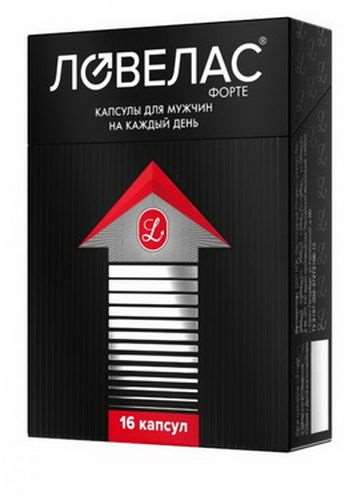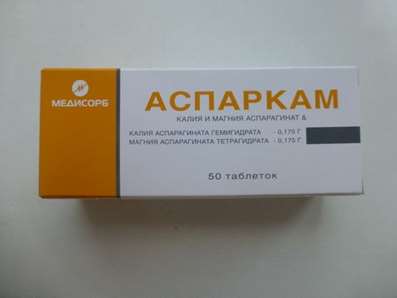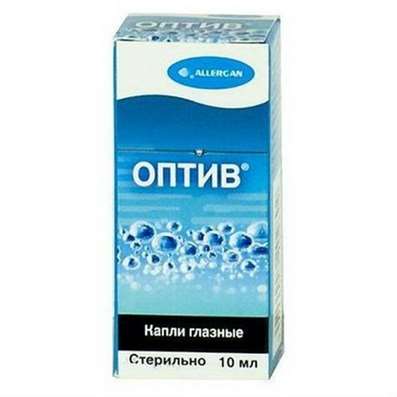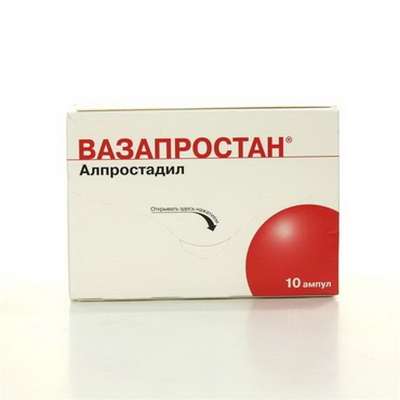Instruction for use: Kogenate FS
I want this, give me price
Dosage form: Lyophilizate for the preparation of a solution for intravenous administration
Active substance: Octocogum alfa
ATX
B02BD02 Coagulation factor VIII
Pharmacological group:
Hemostatic agent [Coagulants (including factors of blood coagulation), hemostatics]
The nosological classification (ICD-10)
D66 Hereditary factor VIII deficiency: Congenital insufficiency of factor VIII; Hemophilia; Hemophilia A; Hemophilia classical; Deficiency of antihemophilic factor of blood VIII; Deficiency of the coagulation factor VIII; Inhibitory form of hemophilia A; Bleeding at hemophilia A; Hereditary hemophilia; Hereditary anomalies of antihemophilic factor VIII; Failure factor VIII; Insufficiency of coagulation factor VIII; Acquired hemophilia; Coagulopathies are hereditary
Composition
Lyophilizate for the preparation of a solution for intravenous administration 1 vial.
active substance: Octocogal alpha (antihemophilic (recombinant) coagulation factor VIII) 250 IU; 500 IU; 1000 IU; 2000 IU
According to the WHO standard for coagulation factor VIII, one ME is approximately equal to the level of anti-hemophilic factor (AGF) found in 1 ml of fresh human plasma pool
Auxiliary substances: sucrose; Histidine; glycine; sodium chloride; Calcium chloride; Polysorbate 80
Description of dosage form
Lyophilizate: white with a yellowish tint powder.
Prepared solution: clear liquid from colorless to slightly yellowish color.
Pharmachologic effect
Mode of action - hemostatic.
Pharmacodynamics
Kogenate® FS is a sterile, stable, purified, non-pyrogenic dried concentrate made using recombinant DNA technology.
Kogenate® FS is intended for use in the treatment of classical hemophilia (hemophilia A) and is produced by the baby hamster kidney (BHK) cells in which the human blood coagulation factor VIII (FVIII) gene was introduced. The cell culture medium contains a solution of human plasma proteins (HPPS) and recombinant insulin, but does not contain proteins derived from animal sources. Kogenate® FS is a highly purified glycoprotein consisting of several peptides, including one with a molecular weight of 80 kD and various dilated subunits with a molecular weight of 90 kD. It has the same biological activity as Factor VIII, obtained from human blood plasma.
The purification process includes a viral inactivation step with an effective solvent / detergent in addition to the classical methods of purification by ion exchange chromatography, immunoaffinity chromatography with monoclonal antibodies, along with other chromatographic steps designed to purify recombinant factor VIII and remove contaminants.
In addition, the production process was investigated for its ability to reduce the infectivity of the experimental agent of transmission spongiform encephalopathy (TGE), which was considered as a model of Creutzfeldt-Jakob disease (CJD) agents and CJD variant. It was shown that a number of separate stages of production and preparation of the feedstock in the process of manufacturing Kogenate® FS reduces the infectivity of this experimental model of the agent. The steps of reducing TEG infectivity included the step of dividing fraction II + III in a solution of human plasma proteins (6.0 log10), and anion exchange chromatography (3.6 log10). These studies provide a reasonable assurance that the low degree of infectivity of the CJES / CJE variant, if present in the starting material, would be eliminated.
Introduction Kogenate® FS provides an increase in the content of factor VIII in blood plasma and temporarily eliminates the coagulation defect in patients with haemophilia A (hereditary bleeding, characterized by insufficient activity of a specific plasma protein, VIII coagulation factor).
Each Kogenate® FS bottle contains the recombinant factor VIII in international units (ME) indicated on the label. 1 IU, according to the WHO standard for the blood coagulation factor of human VIII, is approximately equal to the level of activity of factor VIII in 1 ml of a pool of fresh human plasma.
Pharmacokinetics
The mean recovery of factor VIII activity, measured 10 minutes after infusion, was 2.1 ± 0.3% / IU / kg in Kogenate® FS.
The mean biological T1 / 2 of the sucrose-containing recombinant factor VIII (rFVIII-FS) was approximately 13 hours and was similar to the T1 / 2 anti-hemophilic factor (AHF) derived from human plasma. Kogenate FS shortened the APTTV. Restoration of the activity of the rFVIII-FS factor and its T1 / 2 did not change after 24 weeks of treatment with this preparation alone, which indicates the preservation of efficacy and the absence of formation of antibodies to factor VIII. The mean recovery of factor VIII activity, measured 10 minutes after the administration of the rFVIII-FS dose to 37 patients (after 24 weeks of treatment with rFVIII-FS), was 2.1% / IU / kg, which did not differ from the recovery factor of factor VIII activity, which was determined At baseline, and after 4 and 12 weeks of treatment.
Indications of the Kogenate FS
Prevention and treatment of bleeding episodes in hemophilia A.
Contraindications
Known hypersensitivity or allergic reactions to the components of the drug;
Known hypersensitivity to the proteins of mice or hamsters.
CAREFULLY
In the literature, cases of arterial hypotension, urticaria and chest tightness are described in connection with hypersensitivity reactions in patients treated with antigemophilic factor concentrates. With the development of serious anaphylactic reactions, immediate emergency treatment with resuscitation, such as epinephrine and oxygen, is required.
Application of pregnancy and breastfeeding
Studies of the effects of Kogenate® FS on reproductive function in animals have not been conducted. It is also not known whether Kogenate® FS can cause harm to the fetus if the drug is administered to a pregnant woman or adversely affects the ability to reproduce. During pregnancy and lactation, Kogenate® FS should be used only in the presence of absolute indications.
Side effects
The most common adverse reaction to the administration of Kogenate® FS was the formation of antibodies neutralizing factor VIII (mainly in patients who had not previously been treated with factor VIII drugs or who received minimal treatment).
The incidence of side effects is classified as follows: very often - ≥1 / 10 (≥10%); Often - ≥1 / 100 and <1/10 (≥1%, <10%); Infrequently ≥1 / 1000 and <1/100 (≥0.1%, <1%), rarely ≥1 / 10000 and <1/1000 (≥0.01%, <0.1%). The frequency of unknown is indicated for undesirable effects detected during post-marketing observations, for which it is not possible to reliably estimate the frequency or establish a causal relationship with taking the drug.
On the part of the blood and lymphatic system: inhibition of factor VIII. Very often, it was found in patients who had not received treatment with factor VIII drugs before, or whose treatment was minimal; Infrequently - was detected in patients who received preparations of factor VIII earlier.
General pathology and changes in the injection site: often - reactions at the injection site; Frequency unknown - febrile reaction during infusion.
From the immune system: often - skin reactions of hypersensitivity (including hives, itching, rash); Frequency unknown - systemic hypersensitivity reactions (including anaphylactic reactions, nausea, abnormal blood pressure, dizziness).
From the side of the nervous system: the frequency is unknown - dysgeusia (an unusual taste in the mouth).
Interaction
It is not known.
Dosing and Administration
IV, using the special attached equipment. Each Kogenate® FS bottle contains the activity level of the recombinant factor VIII in the ME, indicated by the one-step analysis method, on the label. After the preparation, the solution must be introduced within 3 hours. For the introduction it is recommended to use the enclosed system.
General approach to treatment and evaluation of the effectiveness of therapy
The following dosages are given as general guidance. It should be emphasized that the dose of Kogenate® FS necessary to restore haemostasis should be selected individually, depending on the patient's needs, the severity of the deficit, the intensity of bleeding, the presence of inhibitors and the desired level of factor VIII. It is often necessary to monitor the course of therapy through analyzes that determine the level of factor VIII. The clinical effect of factor VIII is the most important in assessing the effectiveness of treatment. To achieve a satisfactory clinical result, a higher dose of factor VIII may be required than was calculated. If, after the administration of the calculated dose, the expected concentration of factor VIII can not be achieved or bleeding can be controlled, the patient should be suspected of having a circulating inhibitor to factor VIII. Its presence and quantity (titer) should be confirmed by appropriate laboratory tests. In the presence of an inhibitor, the required dose of factor VIII in different patients can vary significantly, and the optimal treatment regimen is determined only on the basis of the clinical response.
Some patients with low titer inhibitors (<10 Betezda units) can be successfully treated with preparations of factor VIII without anamnestic increase in titer inhibitors. To ensure an adequate response, it is necessary to check the level of factor VIII and the clinical response to treatment. Patients with an anamnestic response to treatment with factor VIII and / or higher inhibitor titers may require the use of alternative medications, such as factor IX complex concentrates, an anti-hemophilic factor (porcine), recombinant factor VIIa, or an anti-inhibitory coagulation complex.
Calculation of dosage
The percentage increase in the level of factor VIII in vivo can be assessed by multiplying the dose of Cohenate ® PS of an anti-hemophilic factor (recombinant) per kg of body weight (IU / kg) by 2% / IU / kg. This method of calculation is based on clinical data on the use of plasma-derived and recombinant AGF-7-9 products and is illustrated in the following examples:
Expected% increase in factor VIII = (number of units administered × 2% / IU / kg): body weight (kg)
Example of calculating the dose for an adult weighing 70 kg: (1400 IU × 2% / IU / kg): 70 kg = 40%
or:
Required dose (IU) = (body weight (kg) × desired% increase in factor VIII): 2% / IU / kg
Example of calculating the dose for a child weighing 15 kg: (15 kg × 100%): 2% / IU / kg = 750 IU required
The dose needed to achieve full hemostasis is determined by the type and severity of the haemorrhagic episode, according to the following general recommendations:
| Type of bleeding | The therapeutically necessary level of activity of factor VIII in plasma | The dose of Coogenate FS required to maintain a therapeutic level of factor VIII in plasma |
| Small bleeding (superficial hemorrhages, early bleeding, hemorrhage to the joints) | 20-40% | 10-20 IU / kg Enter a second dose if symptoms persist of bleeding |
| Moderate bleeding (hemorrhage in the muscles, bleeding in the mouth, obvious hemarthrosis, obvious trauma) | 30-60% | 15-30 IU / kg If necessary, repeat the administration at the same dose after 12-24 h |
| Minor Surgical Interventions | 80-100% | The initial dose is 40-50 IU / kg Repeated dose - 20-25 IU / kg body weight every 8-12 hours |
| Expressed and life-threatening hemorrhages (intracranial hemorrhages, hemorrhages in the abdominal or thoracic cavity, gastrointestinal hemorrhages, hemorrhages in the central nervous system, retrofaringualnoe or retroperitonealnoe space, capsule of ilio-lumbar muscle) | About 100% | Preoperative dose - 50 IU / kg Verify 100% of activity before surgery. Repeat the introduction initially 6-12 hours after the operation, and then continue treatment for 10-14 days until complete healing |
Prevention
Concentrates of AGF can also be administered on a regular basis to prevent bleeding.
Preparation of the drug, its administration and all manipulations with the system for the administration of the drug should be carried out with the utmost care. Kogenate FS with adapter for the bottle is a needleless system that allows you to prevent injuries as a result of pricking with a needle during the preparation of the solution. If the skin is damaged by a needle contaminated with blood, viruses of various infections can be transmitted, incl. HIV (AIDS) and hepatitis. In case of injury, immediately seek medical help. Needles should be placed in the enclosed containers immediately after use, all preparations for preparation and administration of the preparation, including the remains of the prepared Kogenate® FS solution, should be disposed of in the appropriate container.
Preparation of the solution
1. Wash your hands thoroughly with warm water and soap.
2. Warm the closed vial and syringe in the hands to room temperature (not above 37 ° C).
3. Remove the protective cap from the bottle (A). Disinfect alcohol with a rubber stopper, trying not to touch the rubber stopper with your hands.
4. Put the vial with the drug on a hard, non-slippery surface. Remove the paper cover from the plastic adapter cartridge for the vial. Do not remove the adapter from the plastic cartridge. Take the cartridge with the adapter, place it on the bottle with the drug and press firmly (B). The adapter snaps into place on the lid of the vial. Do not remove the cartridge from the adapter at this stage.
5. Carefully open the blister pack of the syringe by bending the paper cover to the middle. Remove pre-filled syringe with solvent. Taking the rod of the piston by the top nozzle, get it out of the package. Try not to touch the sides and threads of the piston rod. Holding the syringe straight, take the plunger by the top nozzle and attach the rod, tightly screwing it clockwise into the plug with the thread (C).
6. Having taken a syringe for the case, to break off a cover (D) from a tip of a syringe. Ensure that the tip of the syringe does not come into contact with the hand or any other surface. Place the syringe until the next manipulation.
7. Now remove the adapter cartridge and discard it (E).
8. Attach the pre-filled syringe by turning it clockwise to the threaded adapter of the vial (F).
9. Introduce the solvent by slowly pressing the piston rod (G).
10. Carefully rotate the vial until all of the substance has dissolved (H). Do not shake the bottle. Make sure that the powder is completely dissolved. Do not use the solution if it is cloudy or contains visible particles.
11. Draw the solution into the syringe, holding the vial over the edge above the vial adapter and the syringe (I), and then slowly and smoothly pull the piston rod. Make sure that the entire contents of the vial are typed in a syringe.
12. Without changing the position of the piston, remove the syringe from the adapter bottle (the latter should remain attached to the bottle). Attach the syringe to the attached system for administering the drug and inject the IV solution (J).
Note: Follow the instructions for using the supplied infusion system.
13. If the patient is required to enter more than one vial, prepare the solution in each vial using the supplied syringe with the solvent, and then connect the solutions in a larger syringe (not supplied) and administer the drug in the usual manner.
14. Parenteral drugs, if the solution and container permit, should be carefully inspected for foreign particles or discoloration before administration.
The rate of administration is determined in accordance with the individual reaction of the patient. Typically, the entire dose for 5-10 minutes and even faster, is tolerated well.
Overdose
Symptoms of overdose are not known.
Special instructions
Kogenate® FS is designed to treat episodes of bleeding due to factor VIII deficiency. The presence of this deficiency should be established before the introduction of Kogenate FS.
Kogenate® FS does not contain vWF, and is therefore not indicated for the treatment of von Willebrand disease. With the introduction of Kogenate® FS with the help of central venous access devices, the development of infections associated with the use of a catheter is possible. The relationship between the occurrence of infections and the drug Kogenate® FS is not established. During the treatment of patients with hemophilia A, circulating neutralizing antibodies to factor VIII can be formed. Inhibitors are especially common in the early years of treatment in young children with severe hemophilia, or in those who previously received a limited amount of factor VIII. However, the appearance of inhibitors can occur at any time during the treatment of a patient with hemophilia A. Patients receiving treatment with any drug AGF, incl. Coagenite FS, need careful monitoring to identify possible antibodies to factor VIII through appropriate clinical observation and laboratory tests in accordance with the recommendations of the Center for the Treatment of Hemophilia.
In clinical trials, Kogenate® was used to treat bleeding episodes in 60 patients who had not been treated previously and pediatric patients who received minimal treatment (no more than 4 days). In 9 (15%) of 60 patients, inhibitors appeared: in 6 (10%) of 60 patients, the titer of these antibodies was above 10 Bethesda units, and 3 out of 60 (5%) patients had less than 10 Bethesz units. The average number of days of treatment at the time of detection of inhibitors was 9 days (range - from 3 to 18 days). 4 out of 5 patients who did not reach the 20 days of treatment by the end of the study, accumulated more than 20 days of treatment during follow-up after the study. One of these 4 patients showed the appearance of inhibitory antibodies (low titer). The fifth patient dropped out of observation.
In clinical studies involving 73 patients who received treatment earlier (more than 100 days), during the four-year observation the formation of new inhibitors was not revealed.
In post-marketing studies of Kogenate® with the participation of more than 1000 patients in the subgroup of previously untreated or minimally treated (less than 20 days) patients, the appearance of inhibitory antibodies was noted in less than 11% of patients. In less than 0.2% of patients treated previously, new inhibitors appeared. According to available registers, the probability of formation of inhibitory antibodies to factor VIII preparations in previously untreated patients with severe hemophilia A is from 28 to 38%.
Formation of antibodies to proteins of mice and hamsters. In clinical trials, all patients were tested for seroconversion with respect to mouse and hamster proteins. After treatment, specific antibodies to these proteins were not developed in any of the patients, and no serious allergic reactions associated with animal proteins were observed with rFVIII-FS infusion. In spite of this, patients should be warned about the possibility of developing a hypersensitivity reaction to mouse and / or hamster proteins in the form of urticaria, localized or generalized urticaria rash, wheezing and arterial hypotension. In these cases, patients should be advised to stop using the drug and consult a doctor.
Application in pediatrics. Kogenate® FS is suitable for the treatment of children. Safety and efficacy studies were conducted with the participation of previously untreated and minimally treated pediatric patients.
Use in elderly patients. Clinical studies of Cohenate FS did not include a sufficient number of patients aged 65 years and older to determine whether their response to treatment differs from that of younger patients. As with any patient receiving Cohenate® FS, the dose for elderly patients should be selected individually.
Oncogenicity, mutagenicity. An in vitro analysis of the mutagenic potential of rFVIII at doses far exceeding the maximum therapeutic dose revealed no reverse mutation or chromosomal aberrations. An in vivo study of rFVIII in animals using doses 10-40 times greater than the expected therapeutic maximum also showed that rFVIII does not have a mutagenic potential. Long-term studies for carcinogenic potential using animals have not been conducted.
Cardiovascular diseases. In patients with cardiovascular diseases or having risk factors for their development after the normalization of thrombus formation in the treatment with the preparation of factor VIII, the risk of complications from the CVS may be the same as in patients without hemophilia.
Influence on the ability to drive a car or perform work that requires an increased speed of physical and mental reactions. Not found.
Release form
Lyophilizate for the preparation of a solution for intravenous administration, 250, 500, 1000, 2000 IU. In bottles of clear, colorless glass of hydrolytic type I, sealed with a rubber stopper under running-in with an aluminum cap covered with a plastic protective cap.
Solvent. 2.5 ml of water for injections for the preparation in dosages of 250, 500 and 100 IU and 5 ml of water for injection for the preparation at a dosage of 2000 IU in a pre-filled syringe of colorless clear hydrolytic type I glass with a plunger and an upper elastomer cover. 1 pre-filled syringe in the blister (PVC / paper).
1 adapter for the bottle in the blister (PVC / paper). 1 device for IV injection in the blister (PVC / paper). 1 vial with drug, 1 blister with pre-filled syringe with solvent, 1 blister with adapter for vial, 1 blister with device for intravenous administration is placed in a cardboard box.
Manufacturer
Bayer Helscher LLS.
800 Dwight Way, Berkeley, California CA, 94701, USA.
Bayer Healthcare LLC.
800 Dwight Way, Berkeley, CA 94701, USA.
For more information, please contact:
107113, Moscow
Conditions of supply of pharmacies
On prescription.
Storage conditions of the drug Kogenate FS
In the dark place at a temperature of 2-8 ° C (do not freeze). It is allowed to store at room temperature (not above 30 ° C) no more than 6 months, for example when treating at home.
Keep out of the reach of children.
Shelf life of Kogenate FS
30 months. Solvent: 48 months.
Do not use after the expiry date printed on the package.

 Cart
Cart





